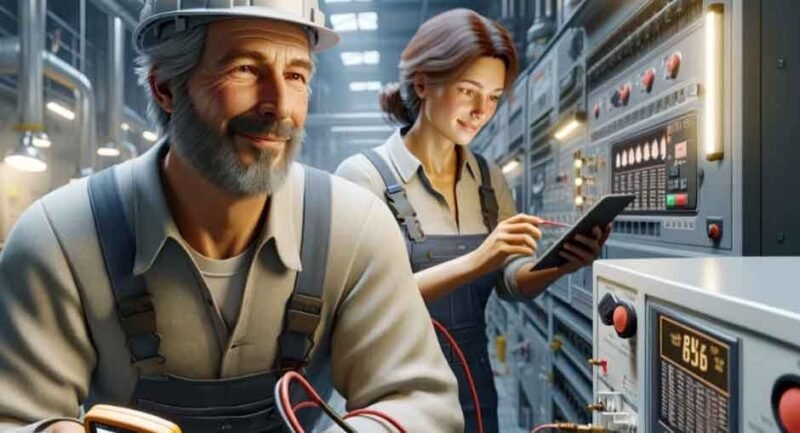
Heating, Ventilation, and Air Conditioning systems are pivotal in keeping comfort and air quality in residential and commercial buildings. To ensure these systems operate efficiently, it’s crucial to understand various HVAC components, such as Carrier parts, and how to maintain and replace them when necessary. This guide provides a comprehensive look into the world of HVAC parts.
Understanding Different HVAC Components
HVAC systems consist of several key components, each with a specific function. The furnace is responsible for heating air, the air conditioner cools it, and the ductwork distributes the conditioned air throughout the building. Thermostats regulate the system’s temperature, while filters clean the circulated air. Understanding these parts is crucial for effective maintenance and troubleshooting. For instance, if a room isn’t reaching the desired temperature, the problem could lie with the thermostat settings, a clogged filter, or problems within the furnace or air conditioner. Familiarity with these components aids in pinpointing the issue quickly, ensuring timely and accurate repairs or replacements.
The Importance of Regular Maintenance
Proper commercial HVAC service and repair is vital for the longevity of HVAC systems. This includes routine tasks such as replacing air filters, cleaning coils, inspecting ductwork, and ensuring all moving parts are well-lubricated. Regular maintenance helps detect wear and tear early, preventing small issues from escalating into major repairs. This proactive approach to maintenance extends the life of the HVAC system and ensures it operates efficiently, saving energy and reducing utility costs.
Choosing the Right Replacement Parts
When it comes to repairing or upgrading an HVAC system, choosing the correct replacement parts is critical. Quality parts ensure compatibility with the system and extend its lifespan. For example, using the correct type of filter or the right belt size for the blower motor is essential for the system to function effectively. Substandard or incorrect parts can lead to inefficiencies and even damage the system over time. It is essential to understand the specifications of the HVAC system to select appropriate parts, ensuring they match the model and capacity of the system.
Energy Efficiency Considerations
Energy efficiency is a critical consideration in HVAC systems. Opting for energy-efficient parts can significantly reduce the environmental impact and lower operating costs. When selecting parts, look for those with high energy efficiency ratings, such as ENERGY STAR-rated components. Upgrades like installing a programmable thermostat or high-efficiency air filters can notably impact the system’s energy consumption. These parts often offer enhanced performance and longer lifespans, contributing to long-term savings and sustainability.
Troubleshooting Common HVAC Issues
Being able to troubleshoot common HVAC issues can be beneficial in maintaining the system’s efficiency and can prevent minor problems from becoming major concerns. Common issues include inadequate heating or cooling, unusual noises, or unexpectedly high energy bills. Troubleshooting can involve checking thermostat settings, ensuring vents are not blocked, and inspecting filters for blockages. For more complex issues, it may be necessary to consult the system’s manual or seek professional help. Recognizing and addressing fundamental problems early on can help maintain the system’s efficiency and prevent significant issues.
Purchasing from Trusted Suppliers Online
Buying from trusted and reputable suppliers is essential when purchasing HVAC parts, like Carrier parts. These suppliers provide authentic, high-quality parts compatible with specific HVAC systems. Purchasing from trusted online suppliers offers the convenience of browsing a wide selection of products and access to detailed product information, often including customer support. This ensures homeowners and building managers receive the correct, high-quality parts for their HVAC system, contributing to its efficient and prolonged operation.
Impact of Technological Advancements on HVAC Systems
Technological advancements have significantly impacted HVAC systems, introducing new components and features that enhance system performance and user experience. Innovative HVAC technologies, for instance, have revolutionized how these systems operate and are maintained. Smart thermostats and sensors can optimize heating and cooling based on real-time data, while advanced filtration systems improve air quality more effectively.
Moreover, technological innovations have led to development of more energy-efficient and environmentally friendly HVAC parts, like low-emission furnaces and air conditioners that use eco-friendly refrigerants. These advancements make HVAC systems more sustainable and increase their operational efficiency and longevity.
Staying updated with these technological trends is crucial when selecting HVAC parts. Incorporating the latest advancements in HVAC technology ensures that the system remains compatible with modern standards, providing enhanced comfort, reduced energy consumption, and a lower environmental footprint. This proactive approach to embracing technological innovations in HVAC parts is pivotal in ensuring the system’s relevance and efficiency in the long term.
Conclusion
In summary, navigating the world of HVAC parts involves understanding the various components of the system, recognizing the importance of regular maintenance, choosing the right replacement parts, considering energy efficiency, knowing how to troubleshoot common issues, and purchasing from trusted suppliers. By following this article, individuals can ensure their HVAC systems operate efficiently and reliably, providing comfort and optimal air quality in their homes or buildings.

